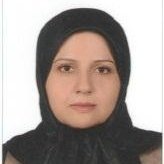International Journal of Computer Network and Information Security (IJCNIS)
IJCNIS Vol. 6, No. 6, 8 May 2014
Cover page and Table of Contents: PDF (size: 633KB)
GAFBone: A New Backbone Construction for Increasing Lifetime in Wireless Sensor Networks
Full Text (PDF, 633KB), PP.18-24
Views: 0 Downloads: 0
Author(s)
Index Terms
Wireless sensor networks, energy consumption, GAF Protocol, backbone construction
Abstract
Wireless sensor networks, which have been used in many applications in recent years, consist of tiny sensor nodes with restriction in processing ability and the battery unit. Because of that, one of the crucial problems in this field is power consumption and network lifetime. Geographic Adaptive Fidelity is a routing protocol which tries to reduce energy consumption by powering off unnecessary nodes. In this paper, we proposed a new backbone algorithm for this protocol to saving more energy which causes to improving the lifetime and performance of the networks. The results of simulation show that active grids will be halved approximately.
Cite This Paper
Leily A.Bakhtiar, Somayyeh Jafarali Jassbi, "GAFBone: A New Backbone Construction for Increasing Lifetime in Wireless Sensor Networks", International Journal of Computer Network and Information Security(IJCNIS), vol.6, no.6, pp.18-24, 2014. DOI:10.5815/ijcnis.2014.06.03
Reference
[1]S. Chand, S. Singh, B. Kumar, “3-Level Heterogeneity Model for Wireless Sensor Networks,” International Journal of Computer Network and Information Security. Vol. 5, No. 4. (2013).
[2]J. Portilla, A. de Castro, E. de la Torre, T. Riesgo, “A Modular Architecture for Nodes in Wireless Sensor Networks,” Journal of Universal Computer Science. Vol. 12, No. 3. (2006).
[3]K. Akkaya, M. Younis, “A Survey on Routing Protocols for Wireless Sensor Networks,” Ad Hoc Networks. Vol. 3, No. 3. (2005).
[4]S. M. Hedetniemi, S. T. Hedetniemi, A. L. Liestman, “A Survey of Gossiping and Broadcasting in Communication Networks,” Networks Journal. Vol. 18, No. 4. (2006).
[5]G. Dhand, S.S.Tyagi, “Survey on Data-Centric Protocols of WSN,” International Journal of Application or Innovation in Engineering & Management (IJAIEM). Vol. 2, No. 2, (2013).
[6]C. Intanagonwiwat, R. Govindan, D. Estrin, “Directed Diffusion: A Scalable and Robust Communication Paradigm for Sensor Networks,” Proc. 6th Annual ACM/IEEE International Conference on Mobile Computing and Networking.( 2000).
[7]C. Schurgers, M.B. Srivastava, “Energy Efficient Routing in Wireless Sensor Networks,” The MILCOM Proceedings on Communications for Network-Centric Operations. (2001).
[8]W. Wang, Y. Peng, “LEACH Algorithm Based on Load Balancing,” Institute of Advanced Engineering and Science Journal. Vol. 11, No. 9. (2013).
[9]N. Kaur, D. Sharma, P. Singh, “Classification of Hierarchical Routing Protocols in Wireless Sensor Network: A Survey,” International Journal of P2P Network Trends and Technology. Vol. 3, No. 1. (2013).
[10]S. A. Nikolidaki, D. Kandris, D. D. Vergados, Ch. Douligeris, “Energy Efficient Routing in Wireless Sensor Networks Through Balanced Clustering,” Algorithms Journal. Vol. 6, No. 1. (2013).
[11]Y. Xu, J. Heidemann, D. Estrin, “Geography-Informed Energy Conservation for Ad Hoc Routing,” Proc. 7th Annual ACM/IEEE International Conference on Mobile Computing and Networking. (2001).
[12]J. N. Al-karaki, A. E. Kamal, “Routing Techniques in Wireless Sensor Networks: A Survey,” IEEE Wireless Communications. Vol. 11, No. 6. (2004).
[13]R. Guleria, A. K. Jain, “Geographic Load Balanced Routing in Wireless Sensor Networks,” International Journal of Computer Network and Information Security, Vol. 5, No. 8. (2013).
[14]I. Stojmenovic, “Handbook of Sensor Networks: Algorithms and Architectures,” Chapter11 .pp 344. (2005).
[15]N. Meghanathan, “Graph Theory Algorithms for Mobile Ad Hoc Networks,” Informatica Journal. Vol. 36, No. 2. (2012).
[16]Y. Yao, J. Gehrke, “Query Processing for Sensor Networks,” Proc. 1st Biennial Conference on Innovative Data Systems Research. (2003).
[17]M. W?lchli, R. Zurbuchen, Th. Staub, T. Braun,” Backbone MAC for Energy-Constrained Wireless Sensor Networks,” Proc. 34th IEEE Conference on Local Computer Networks. (2009).
[18]Y. Choi, M. G. Gouda, H. Zhang, A. Arora, “Routing on a Logical Grid in Sensor Networks,” Technical Report TR04-49, Department of Computer Sciences, The University of Texas at Austin. (2004).
[19]MATLAB: MATrix LABoratory. www.mathworks.com.
